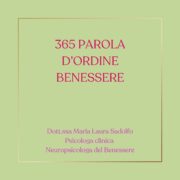365 Parola d’ordine Benessere



Dicembre ogni giorno un alimento.
Frutta secca:
Può essere “a guscio” o “polposa”
La prima oleosa, la seconda non oleosa perché disidratata.
La frutta secca polposa comprende fichi, datteri, albicocche, prugne, uva passa.
Qualità:
La frutta secca a guscio è ricca di vitamina B ed E, ha proprietà antiossidanti, è ricchissima di sali minerali come magnesio, potassio, ferro, rame, fosforo e calcio.
La frutta secca polposa contiene zuccheri, alto contenuto di fibre e sali minerali.
Benefici:
L’assunzione corretta di frutta secca permette la riduzione del colesterolo cattivo (LDL).
Ha una funzione antinfiammatoria.
La vitamina E favorisce una funzione antiossidante.
Acido folico e selenio hanno una funzione antiossidante, e regolano il metabolismo.
Consumo:
La frutta secca va consumata a colazione, oppure l’ideale è con gli spuntini, associata ad uno yogurt oppure ad un frutto fresco.
Anche per gli sportivi è uno snack energetico di alta qualità.
No alla frutta secca per: gli allergici, ma anche per chi soffre di colite, rettocolite ulcerosa, gastrite, ulcera e morbo di Crohn, vista la grande quantità di fibre. Per i diabetici, no alla frutta secca polposa.
~
December a food every day.
Dried fruit:
It can be “shell-like” or “pulpy”
The first oily, the second non-oily because it is dehydrated.
Pulpy dried fruit includes figs, dates, apricots, plums, raisins.
Quality:
Dried nuts are rich in vitamins B and E, have antioxidant properties, and are very rich in mineral salts such as magnesium, potassium, iron, copper, phosphorus and calcium.
The pulpy dried fruit contains sugars, high fiber content and mineral salts.
Benefits:
The correct intake of dried fruit allows the reduction of bad cholesterol (LDL).
It has an anti-inflammatory function.
Vitamin E promotes an antioxidant function.
Folic acid and selenium have an antioxidant function and regulate the metabolism.
Consumption:
Dried fruit should be consumed for breakfast, or is ideal with snacks, combined with yogurt or fresh fruit.
It is also a high quality energy snack for athletes.
No to dried fruit for: allergy sufferers, but also for those suffering from colitis, ulcerative colitis, gastritis, ulcers and Crohn’s disease, given the large quantity of fibre. For diabetics, no to pulpy dried fruit.
~
十二月每天一餐。
乾果:
它可以是“殼狀”或“漿狀”
第一個是油性的,第二個是非油性的,因為它是脫水的。
果肉乾果包括無花果、棗子、杏桃、李子、葡萄乾。
品質:
乾堅果富含維生素B和E,具有抗氧化特性,並富含鎂、鉀、鐵、銅、磷和鈣等礦物鹽。
果肉乾果含有糖、高纖維含量和礦物鹽。
好處:
正確攝取乾果可以減少壞膽固醇(LDL)。
它具有抗炎功能。
維生素 E 促進抗氧化功能。
葉酸和硒具有抗氧化功能並調節新陳代謝。
消耗:
乾果應該作為早餐食用,或與優格或新鮮水果一起搭配零食是理想的選擇。
也是運動員的優質能量零食。
不適合乾果:過敏患者,也適合患有結腸炎、潰瘍性結腸炎、胃炎、潰瘍和克隆氏症的人,給予大量纖維。對於糖尿病患者來說,不要吃果肉狀的乾果。
hashtag#365paroladordinebenessere
hashtag#mindfulness
hashtag#neuropsicologiadelbenessere
hashtag#mentecorpo
hashtag#standingovation
hashtag#caree
hashtag#growth
hashtag#dottssasadolfomarialaura
